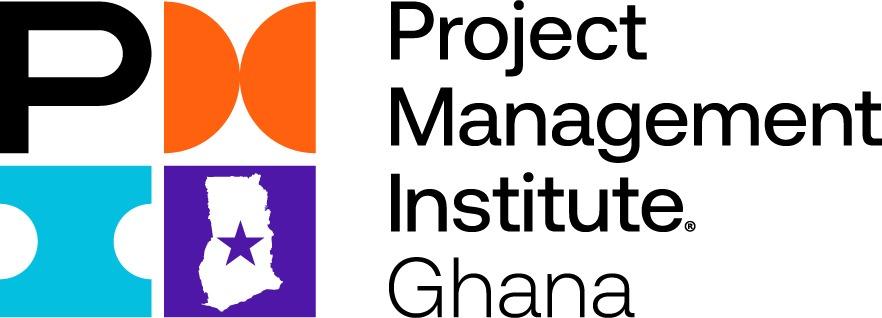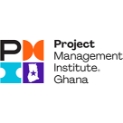February 13 2025 at 12:00AM
The Ghana National Cathedral: Vision, Challenges, and Critical Project Management Considerations
Introduction
The Ghana National Cathedral project has been one of the most high-profile infrastructure undertakings in the country in recent years. It is intended to develop an interdenominational Christian worship center that showcases Ghana as a society dependent on God. It is meant to be a practical expression of “a society whose aspirations are hinged on God” and reflects Ghana's status as a predominantly Christian nation (National Cathedral of Ghana, 2024). The project was conceived by President Nana Akufo-Addo as a personal pledge to God during the 2016 election campaign. He promised to build a national cathedral to “thank God for His blessings, grace, favor, and mercies on the nation of Ghana” (Mensah, 2023). The cathedral, envisioned for inauguration in June 2024, was conceived as a space for national Christian worship, unity, celebration and “to serve as a venue for formal state occasions of a religious nature, such as the inauguration of Presidents, State Funerals, National Thanksgiving Services, etc.” (Mensah, 2023).
However, its execution has been fraught with uproar, raising fundamental questions about planning, governance, financing, and stakeholder engagement considerations. The numerous controversies surrounding this noble religious and cultural heritage project raise questions about the reflections made during the structuring and planning phase. This article examines the key project management considerations related to the Ghana National Cathedral, highlighting lessons that can be drawn for large-scale national projects.
Features of the Project
- Location: The Cathedral is situated in Accra, near the State House, reflecting its role in national life. The project occupies 14 acres of state lands stretching from the Ridge roundabout to the Parliament/State House. Nearby national landmarks include the Accra International Conference Center, Electoral Commission head office, Ministry of Communications and Digitalization, Maritime Authority, Ministry of Foreign Affairs Annex, and the Accra Sports Stadium.
- Architecture: The design is led by the renowned Ghanaian-British architect Sir David Adjaye, known for blending African architectural themes with modern design. The architecture is rooted in African culture and Ghanaian heritage, drawing inspiration from chieftaincy symbols. The design communicates the cathedral as not only an ecclesiastical structure but also an expression of faith, rooted in Christian architectural principles.
- Facilities: The project features a 5,000-seat auditorium expandable to 15,000, chapels, a 10,000-square-meter Bible Museum, a Biblical Garden showcasing vegetation from the Bible, and a training center. It also aims to house a center for national reconciliation and includes a 450-square-meter children’s area for activities, exhibits, and Bible-related storytelling for young visitors.
Current Status
As of recent updates, the project has experienced delays due to funding challenges and controversies. No major work has been done on the cathedral for almost thirty-three months. Efforts to raise funds through local and international contributions, including fundraising events and appeals to churches in Ghana and the diaspora, have faced challenges.
The project has encountered significant criticism over its funding, timing, and ownership structure. Initially presented as privately funded, reports of government allocations to the project raised concerns about priorities, especially considering Ghana’s economic challenges. Critics argue that public funds could be better directed toward pressing needs like healthcare, education, and infrastructure.
A total of $58,141,509.52 has been released for the project as of 2022, funded by taxpayers. This excludes contributions by individuals, churches, and other groups. This amount was used for activities such as designs, consultancy services and construction. However, a report from RIBADE JV, contractors for the project, revealed that only 37.9% of the funds were allocated for construction activities, raising questions about the use of the remaining funds. The total contract value of the design and consultancy services by Adjaye and Associates is $21.4 million. And the total contract value for the construction awarded to RIBADE JV Company Limited is $312,394,049.53 (CHRAJ, 2024).
The project also involved demolishing private and public properties, including judges' residences and the passport office, sparking public outcry over the planning processes and compensation. Some affected property owners have pursued legal action, demanding compensation. Alternative accommodations were secured for the judges at a cost to the state (Mensah, 2023) and the relocation of the Ridge passport office cost the state some $9.2 million.
Critical Project Management Considerations
The National Cathedral project as a monumental undertaking requires meticulous planning, coordination, and execution. Key project management considerations such as ensuring alignment with stakeholders' expectations, establishing a robust governance framework, managing financial resources effectively, and adhering to timelines and quality standards seemed to be challenged.
Stakeholder Engagement
The contentions surrounding the project suggest that key stakeholders may not have been properly engaged during its development. Stakeholder engagement is crucial for successful planning, implementation, and delivery, especially for projects involving diverse interest groups. Effective engagement:
-
Builds Consensus and Support: Aligning interests and securing legitimacy for the project.
-
Enhances Transparency and Accountability: Building trust through open communication between project
leaders and stakeholders.
-
Secures Funding and Resources: Demonstrating a well-planned and inclusive project attracts support from donors and other stakeholders.
Initially perceived as a private pledge and project by President Akufo-Addo, the narrative later shifted to being a public initiative. Even then, minority members of the 8th Parliament, representatives of the people, claimed they don’t have the funding details for the project, leading to a censure motion against the finance minister. An early and consistent stakeholder engagement could have fostered understanding and garnered the support needed to deliver the project.
Project Cost & Funding
The project’s cost escalated significantly, from $100 million in 2018 to an estimated $400 million by 2022. While some scope elaboration occurred, the 400% increase is notable. This cost excludes compensation for the demolished properties and the cost of relocating the passport office which added to the financial burden on the state. The funding mix, reliant on private donations and government’s "seed money," also raises concerns about sustainability for such a large capital project.
Comparisons with similar projects highlight this high cost. For example:
- The Washington National Cathedral cost $65 million and was entirely privately funded.
- The Basilica of Our Lady of Peace in Yamoussoukro cost $200 million, funded privately by President Félix Houphouët-Boigny.
- The National Ecumenical Centre in Abuja cost $30 million and was privately funded.
Within Ghana, churches like the Perez Dome and Royal House Chapel International have similar seating capacities but were constructed at lower costs. These comparisons suggest that the National Cathedral’s total cost may be disproportionately high for the intended scope and Ghana’s economy at this time.
Project Location
The cathedral’s location near key national landmarks poses logistical challenges, including traffic management and air pollution. The Accra International Conference Center, Parliament House, and Accra Sports Stadium are within a 1-kilometer radius, creating potential congestion during concurrent events. The August 2019 architectural and engineering contract between the Office of the President and Sir David Adjaye & Associates included a Traffic Impact Assessment (Opoku-Mensah, 2022) and it will be interesting to see the details of the report. Cathedrals, generally, attract large crowds, including domestic and international tourists (Dept. for Communities & Local Gov't, 2017) and the National Cathedral is expected to draw 400,000 visitors annually and become a major tourist attraction (Asare, 2022).
Strategically, capital projects like the cathedral can catalyze local economic growth by creating jobs in construction, administration, and tourism while stimulating the development of supporting infrastructure such as hotels, transport, and eateries. To maximize its impact, the cathedral's location should balance accessibility with economic expansion by situating it in a developing area. A historical precedent is Ghana’s first President, Dr. Kwame Nkrumah, who chose Kitase near Aburi for the Peduase Lodge (a presidential retreat center) in 1959, although Accra had plenty unused land, to boost the Akwapim Ridge’s economy, expand security operations, and enhance road connectivity between Accra and the Ridge (Daily Graphic, 2013). Today, Kitase has seen remarkable development, illustrating how strategic location choices can spur regional growth and development.
Project Governance & Leadership
Effective governance and leadership are crucial to the success of the National Cathedral project, ensuring accountability, strategic alignment, and smooth decision-making. Strong leadership builds stakeholder trust, while governance structures mitigate risks and optimize resources.
President Akufo-Addo inaugurated a 13-member Board of Trustees on January 13, 2017, comprised of leading clergy. Following the National Cathedral’s registration as a company in 2019, this Board of Trustees, appointed in their individual capacities rather than as institutional representatives (Opoku-Mensah, 2022), became the directors of the National Cathedral Company.
For a project of this scale, the leadership team, trustees and administrators, must possess diverse skills. Trustees need strategic vision, financial oversight, and expertise in risk management, while administrators must excel in project execution, stakeholder engagement, and operational management. The $400 million National Cathedral project is not solely a theological endeavor that needs an all-clergy leadership. It is a major enterprise that involves marketing, innovative fundraising, and effective management of the structure and therefore requires leadership beyond the clergy. This should include professionals in finance, legal, marketing, project, operations and procurement management.
This has been forcefully underscored by the findings of the Commission for Human Rights and Administrative Justice (CHRAJ) in their November 2024 report on the project, which highlighted procurement breaches, administrative lapses, and violations of corporate governance principles (CHRAJ, 2024). Making financial decisions for such a large project without proper documentation is problematic and a broader leadership team will greatly ensure project success as they balance innovation with tradition and prioritize regulatory compliance, financial sustainability, spiritual and cultural significance.
Conclusions and Recommendations
The Ghana National Cathedral project represents a noble vision of faith and national unity but has faced significant challenges. A more inclusive and transparent approach to planning and execution could address many of these challenges and ensure that the project achieves its intended spiritual, cultural, and economic objectives.
The new government has an opportunity to decide the fate of this project—whether to continue, repurpose, or abandon it. Globally, some cathedral projects have faced similar crossroads. These include the:
- Winchester Cathedral (Canada): Abandoned mid-construction due to insufficient funding and changing priorities.
- Sagrada Familia (Spain): Has been under construction since 1882, primarily reliant on private donations. The project had many breaks and now completion is anticipated in 2026.
- Bethlehem Baptist Cathedral (USA): Was converted into a community center following a decline in its congregation.
Key reasons for the abandonment or incompletion of such projects typically include funding challenges (e.g., reliance on donations, limited government support), shifting societal priorities, and diminishing public or stakeholder interest.
Despite these challenges, I believe this project is worthwhile, remains a laudable initiative and should proceed with some reviews to ensure its success and long-term relevance. I recommend the following:
1. Leadership
Reconstitute the leadership of the National Cathedral project to include individuals with diverse technical skills and experiences, alongside the clergy. Key areas of expertise should include legal, procurement, administration, marketing, project and operations management. The secretariat of the National Cathedral should operate as an independent public office, detached from the Office of the President with accountability ensured through regular reporting and independent audits
2. Stakeholder Engagement
Prioritize robust engagement with all stakeholders to reposition the cathedral as a national project for the people of Ghana, not an individual’s project. Emphasize unity and inclusivity to mitigate divisive perceptions, particularly in Ghana’s multicultural and multifaith society.
3. Location
Reassess the project’s location. Consider relocating to a developing area within the capital that can benefit from ancillary development and improved traffic and accessibility. A re-evaluation of the current design may also be necessary to align with this new approach. A less crowded-use case would be more suitable for the current location.
4. Project Cost
Review and optimize the total project cost to reflect current economic realities. A more affordable and publicly acceptable budget is crucial for maintaining momentum. Additionally, a phased development approach can be adopted to ensure manageable progress and sustain stakeholder confidence.
5. Funding
Maintain the hybrid funding model, combining public funds, private donations, and corporate sponsorships. Strengthen private fundraising campaigns and deepen engagement with religious communities. Limit government support to specific aspects, such as land acquisition, temporary secretariat operations, and staffing, subject to parliamentary approval. Explore international support from global religious organizations, charities, and partner governments. Ensure transparency and ethical practices in fundraising, with clear documentation of funds and project progress.
6. Long-Term Sustainability
Develop a comprehensive plan for the project’s long-term sustainability. Tourism will play a critical role in generating revenue, as seen with the Notre-Dame Cathedral in Paris and the Cologne Cathedral in Germany, which leverage tourism and ticketed events for maintenance and operational costs. Collaborate with travel agencies as well as Christian and cultural organizations to maximize the cathedral’s tourism potential. Activities such as ticketed events, museum tours, and event space rentals will ensure continuous revenue streams and the cathedral’s ongoing relevance.
By addressing these areas, the National Cathedral can achieve its goals while aligning with national interests and public confidence.

Percy A. Antwi-Agyei
The writer: Engineer,
Project Management Consultant, Development Finance & Investment Analyst, Entrepreneur.
Contact: percy@grip360ltd.com; percy925920@gmail.com;



